GLIMPSES OF OCTOBER GLORY
All things considered, I reckon October has to be my favorite month of the year. I have so many fond memories of the month associated with boyhood, and now, many decades later, it continues to be a period of delight as the world in which I live makes the transition from the time of growth and greenery to that of harvest and hunting, from withering heat to comforting chill. Here is a sampling.
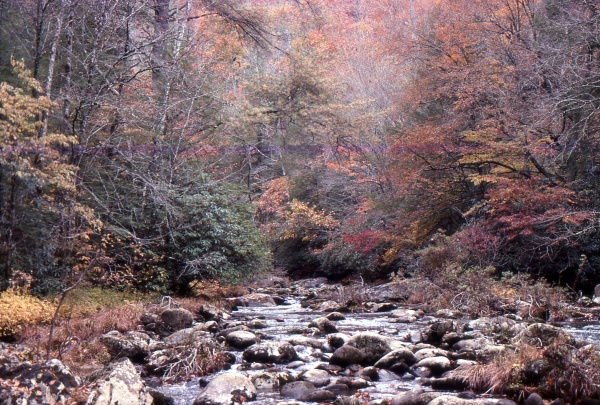
Big Santeetlah Creek in the splendor of October
*October means hickories yellowing on the ridges and squirrels cutting on their nuts while a mountain lad, at least in his mind, goes back to a time when he hunted bushytails with an eagerness that rivaled that of any modern deer hunter, and I have memories of my first squirrel which are at least and poignant and enduring as those of my first whitetail.
*The month brings the toothsome delight of a properly made persimmon pudding.
*It’s a time for gathering black walnuts which will, in due time and after considerable effort, become treats in the form of cookies, apple sauce cakes, and black walnut cakes during the holiday season.
*October is memories of munching on chinquapins while walking through the woods.
*It’s recollections of chomping into a red or golden delicious apple from our little orchard which was so juicy moisture inevitably ran from your mouth and so cold in the morning dew that it made your teeth hurt.
*It was boyhood gathering Chinese chestnuts from the trees in our yards and listening to Dad and Granddad reminisce about October days when the American chestnut was king.
*It’s the month of the appropriately named October beans withering on the vines in corn fields.
*It’s gathering those October beans and thrashing them atop old sheets to separate the beans from the husks.
*It’s going out into the fields to get in pumpkins and candy roasters for winter storage in the basement.
*October means fond memories of the occasional chance to kill a grouse which walked by or was flushed when I was out squirrel hunting. Honesty compels me to admit I “ground swatted” more than one, but any teenage boy worth his salt is two parts poacher (and besides, if you’ve ever dined on grouse you readily understand the temptation)
*It meant putting away fishing gear until next April—no one fished for trout in the fall when I was a boy.
*It was once a time to enjoy the bounty of the season’s first wild game as Mom graced our table with baked squirrel, fried squirrel, or squirrel and dumplings. Today the gustatory delight remains, but it focuses on venison instead of small game.
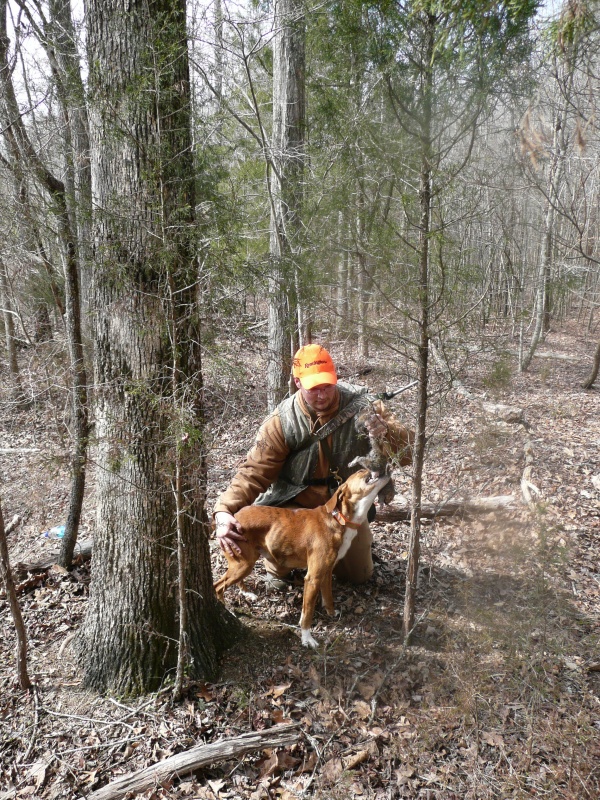
Josh Dawkins and his squirrel dog share a special moment
*October was a time for taking our beagles out for training runs (rabbit season didn’t open until Thanksgiving) in the cool of a Sunday afternoon.
*It was wonderful afternoons spent walking through the woods, carrying a gun to be ready should opportunity come knocking, but really I was doing nothing more than wandering in the aimless way which is the special privilege of the young and elderly. I guess I’m easing into the latter category, because I find I seem to enjoy walking and piddling more with each passing year. October is a mighty fine time for that.
*It’s a mess of fresh-picked greens, suitably seasoned with streaked meat and supplemented by a fresh-baked pone of cornbread. I enjoyed just such a feast a few days ago, using turnip greens gathered from a food plot with the aid of a flashlight after having left a nearby deer stand.
*October is the unsurpassed splendor of a hunter’s moon clearing the horizon and turning the gloaming to gold. For a few fleeting moments the full moon of October seems so close you feel you could somehow touch it if you just walked a half mile or so to the horizon.
*October is, in short, a grand time to be alive, and to know the month in all its glory, especially if you love the outdoors as I do, is to wander through realms of dreams.
***********************************************************************************
GLIMPSES OF MOUNTAIN CHARACTERS
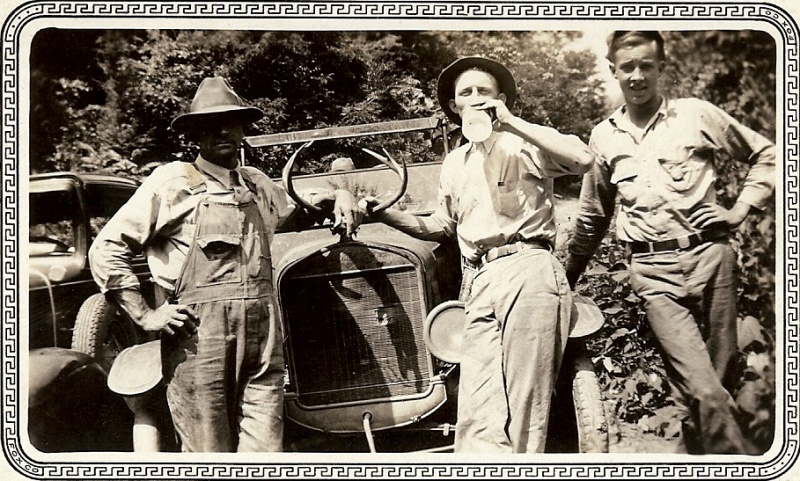
Mark Cathey (who was Britt McCracken’s uncle) on left, Cecil Plott (center drinking moonshine)
and a young Britt McCracken on the right (circa 1930)
In past newsletters, more than once, I’ve mentioned a grand character from my youth by the name of Britt McCracken. The most recent came in last month’s newsletter, and as I indicated then he was without question the funniest man I’ve ever known. Quick with a quip, as good-natured as is humanly possible, and an absolute master of repartee, Britt was so razor-sharp it was a singular mistake to get cross-wise with him on any issue. A woman straight out of New York City who was visiting the Smokies in the late 1930s learned as much on a bus trip from the little town of Maggie Valley to Cherokee.
At the time Britt was a bus driver on the route, and his normal accompaniment of passengers consisted of locals—both Native Americans living on the Cherokee Reservation and others who happened to have business on one side or the other of Soco Mountain (the road connecting the two towns was a winding, steep, and tortuous one which crossed the main ridgeline through Soco Gap. The locals, along with a single “outlander,” boarded the bus at the Maggie Valley stop. Britt was running a bit behind and the Yankee lady seated herself directly behind him and commenced complaining about timeliness, saying “public transportation doesn’t run like this in New York,” and generally making a verbal nuisance of herself.
Her whining continued non-stop up the steep mountain grade and Britt put the bus in “granny” gear and crept up the road at no more than 15 miles per hour. He listened in stoic silence all the way to Soco Gap and then, as the road opened up on the downward side of his journey, began to let the old bus straighten the curves. Most of his passengers paid no attention, but such was not the case with the vocal outsider yammering in his ear. Within a mile she had dramatically changed tunes, saying the bus was going far too fast rather than at its previous tortoise-like pace. Britt listened in stoic silence, as he had all along, until the thoroughly alarmed woman said: “Driver, if you’ll stop this bus I’ll get off.”
His patience at an end, Britt had the perfect reply. “Lady,” he said politely, “if I could stop this bus we’d both get off.” Accounts differ as to whether or not a puddle suddenly appeared on the bus floor immediately behind the driver, but all are in agreement that silence reigned supreme the rest of the way down the mountain.
*********************************************************************************
JIM’S DOIN’S
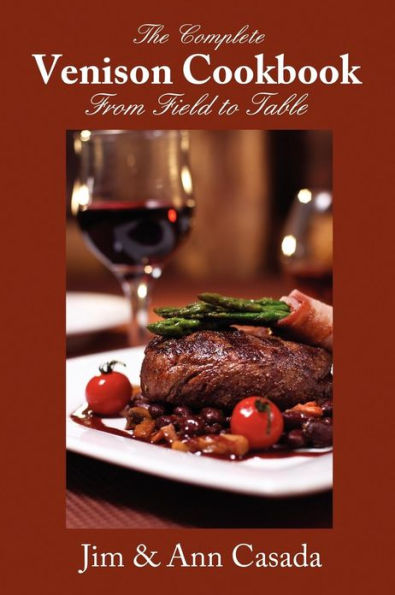
Thanks to a variety of factors, most notably the ongoing, abject decline of my spouse of upwards of 50 years, Ann, my literary and other endeavors have been somewhat reduced in recent weeks. I did manage to take a nice doe during our muzzleloading season at the beginning of the month, and now there’s a good beginning on meat for late 2020 and 2021 in the freezer in the form of sausage, cubed steaks, ground meat, and venison bacon cheeseburgers (more below under recipes). Sitting in a deer stand (if ever there has been an inappropriate word, it is using “stand” for what is actually a “sit”) is soothing balm for my soul, and I’ve been getting in a couple of hours in the afternoon on a fairly regular basis. I’ve passed up several other does and a small buck, but at some point I’ll take another deer if Dame Fortune decides to shine on me. As much as anything though, these times afield offer peaceful hours for quiet contemplation and reflection on different days and bygone ways. After all, together Ann and I wrote a number of cookbooks, with a couple of them focused exclusively on venison. One of them, The Complete Venison Cookbook, has proved particularly popular. If you want a copy, with scores of recipes, most of them simple and straightforward, I’m offering it as a special, postage paid, for $15.
On the writing front, I contributed a lengthy introductory essay to the section on “Guns” in George Frizzell and Mae Miller Claxton (Editors), Horace Kephart Writings. The massive book, running well over 700 pages, is just out from the University of Tennessee Press. While I am by no means a great fan of Kephart, who stereotyped mountain folks shamefully in Our Southern Highlanders, I do readily recognize that he was one of the country’s leading authorities on firearms in the first quarter of the twentieth century. By the time you are reading this the Nov./Dec. issue of South Carolina Wildlife magazine will be out, and it is scheduled to include my article, “Growing Up with Grandpa Joe,” which deals with a subject near and dear to my heart. If you have been a reader of this newsletter for any length of time, you will be well aware of just how large the presence of my paternal grandfather loomed in my youth. The subject of my regular book column for the Nov./Dec. issue of Sporting Classics is “Feathered Challenges and Fly-Fishing.” I particularly recommend a couple of the books covered in the column, Jim Spencer’s Bad Birds 2 and Ron Jolly’s Memories of Spring. Both are dandies by men with whom I’ve shared turkey hunts and hunting camps.
I had a guest blog on Blind Pig & the Acorn, a splendid daily offering from my webmaster, Tipper Pressley, on “Appalachian Similes.” It appeared on October 15 and you can read the piece, along with lots of delightful input from readers, by visiting www.blindpigandtheacorn.com. While there, if you don’t already receive the free daily blog, do yourself a favor and sign up for it. Finally, a profile I did of old-time writer Harold Sheldon, “Teller of Tranquil Tales: Colonel Harold P. Sheldon,” appears in the October 12 issue of “Sporting Classics Daily.”
**********************************************************************************
RECENT READING
I have a lifelong talent for being forgetful, not so much when it comes to things like daily routine. I brush my teeth and take my medications without much trouble (!), but I have a pronounced penchant for getting engrossed in something and letting good intentions fall by the wayside. Such was the case with one aspect of last month’s newsletter. I’ve promised to include a regular update on my own reading, which is voracious and wide-ranging in terms of subject matter, and I plain-out failed to do so in the September newsletter. Maybe doing a bit more than usual on this front will to some degree compensate for that oversight.
Often when I get fully launched into a writer I consume pretty much that author’s entire oeuvre. I’ve done that in recent weeks with Laurie King, a highly successful mystery writer who has made a cottage industry of producing books which are take-offs on Arthur Conan Doyle’s Sherlock Holmes tales. She’s good and excels at getting her historical background right. That’s something, as a former history professor, I greatly appreciate.
More recently, I’ve renewed my acquaintance with the incredibly prolific Wilbur Smith, He’s now well into his 80s but still churns out books at an amazing pace. He has adopted the increasingly widespread practice of taking on a co-author in his most recent efforts, and I suspect that in his case, as most like this, the co-author does most of the work and let Smith’s reputation carry the ball when it comes to book sales. Whatever the precise details, the books continue to be first-rate, and if King is first-rate when it comes to historical setting and detail, Smith is in a class by himself. Seldom indeed have I found anything to question about his efforts, and the vast majority of his books are set in an area (Africa) and focus on subject matter (British imperial history, great hunters, notable battles, and the like) with which I have intimate familiarity. He’s one of my favorite authors, and if you like a tale well told, with solid underpinnings of authenticity and a knack for believable characters, I highly recommend Smith. Incidentally, if you look at the lengthy list of Africana for sale on my website, you’ll find a whole bevy of books by Smith available, most of them at bargain basement prices.
I’ve also recently re-read a couple of books by a fine writer on the culinary arts who also happens to have Appalachian roots, Ronni Lundy. Along with my highly talented friend, Rob Simbeck, she was recently featured on a virtual book talk sponsored by Malaprops book store in Asheville, NC. They were talking about Rob’s new book, The Southern Wildlife Watcher, for which I wrote a Foreword. Incidentally, if you are someone enchanted by fine writing and the world around us, lay your hands on Rob’s work. It’s a dandy and will entertain even as it informs. Finally, over the last couple of days I read and thoroughly enjoyed a memoir from one of my favorite fly-fishing writers and a man who is an absolute peach of a human being, Nick Lyons. The book, Fire in the Straw: Notes on Inventing a Life, is deep, powerful, and compelling. You come from its starkly forthright pages realizing that Lyons was a man who, against considerable odds, shape a wonderful life full of giving and graciousness. Fishing looms large in that life and in the impressive literary gift he has given the reading world.
*********************************************************************************
OCTOBER FIXIN’S
TURNIP GREENS
When it comes to greens the way I like them, there are a few basic “must take” steps. The first involves cooking them with streaked meat (or fatback, streak-of-lean, salt pork, or whatever you want to call it). You can get the wonderful blend of seasoning and salt infused into the greens in one of two ways. Either put a hefty chunk of streaked meat in the pot when you cook them or, and this is my preference, fry the streaked meat until it is crispy, set the meat aside, and pour the grease into the pot of greens. When the greens are cooked this way, I like to follow the process a wonderful black cook I knew for years advocated—preparation of “holy greens.” To make “holy greens” is simple—you cook the hell out of them! The end result will be tender greens and rich, almost broth-like juice with them. Serve with some of the reserved streaked meat crumbled atop the greens or, better still, bake a pone of cornbread, put a slab of streaked meat in a slice, and chow down. To me, that’s a mountain meal of satisfying completeness.
VENISON BACON CHEESEBURGERS
Thanks to the considerable blessing of having a good hunting buddy and cherished friend, Darrin Dawkins, who has all the facilities and equipment for processing deer, I’m able to do some things with venison you won’t get from a commercial processor. On top of that, it’s comforting to know it is meat from the deer you have actually killed going into the freezer, that it has been handled and aged in meticulous fashion, and that the end product has been processed from start to finish with every attention to cleanliness. This year the three of us (Darrin and his son, Josh, along with yours truly) have been doing some experimentation. One early result has been a round of sausage making that the three of us are most pleased with. But the real coup has been venison bacon cheeseburgers. We got the concept from an area processor who will turn your deer into signature burgers, but the price they charge is breathtaking. We decided to do it ourselves and the end result has all of us delighted. Here’s the basic “formula.”
Combine venison and pork belly (with plenty of lean in it—you can likely find it at a local processor of buy what are called “bacon ends”) on a ratio of 7 pounds of venison for 3 pounds of bacon. For each combined 10 pounds of venison and pork add a pound of cheese (I am partial to extra sharp cheddar, Josh likes pepper jack, and I have no doubt whatsoever that a bleu cheese burger would be delightful). Run the mix through a meat grinder set to hamburger production, and all that remains will be grilling burgers and putting them atop buns with all the fixin’s. Rest assured you won’t be disappointed unless you are the hapless soul who simply doesn’t like burgers. Even my buddy’s wife, who declares she is indifferent (at best) when it comes to venison, raves about the end result.
ANNA LOU’S SQUIRREL
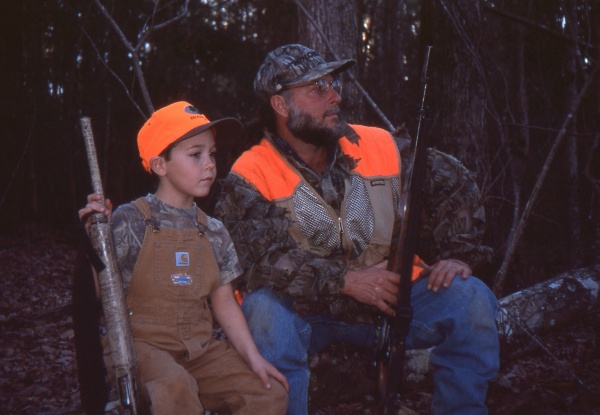
Joey Turner and his father, the late Roy Turner,
wait in the October woods for a bushytail
We ate a lot of squirrel when I was a boy, and the only real limitation to how much we enjoyed was how successful my hunts (and on Saturdays, hunts with Daddy) were. Folks forget it in today’s world, but a half century or more ago small game hunting was THE hunting for most sportsmen, and the single most popular type was the quest for squirrels. I might note that in many ways squirrel hunting was a far better approach to the shaping and making of a sportsman than deer hunting, because it involved a lot of critical instructional factors—stealth, solid woodsmanship, knowledge of one’s quarry, sound marksmanship, patience, and persistence. Squirrels were always welcome on the table and, when properly prepared, absolutely scrumptious fare. Here are two recipes straight from my boyhood (and Anna Lou was my mother’s name, hence the title for the first recipe).
1-2 squirrels, dressed
Water to cover meat
1 teaspoon baking soda
1-2 tablespoons butter
Place squirrels in large saucepan. Cover with cold water, ad soda and heat to boiling. Remove from heat and rinse squirrel well under running water (rubbing to remove soda). Return to pan and cover with fresh water. Bring to a boil; reduce heat and simmer until tender. Place squirrel in baking dish, dot with butter, and bake at 350 degrees until browned and crusty.
This was Mom’s favorite way to cook squirrel. You can prepare rabbit the same way.
FRIED SQUIRREL
1 cup flour
1 teaspoon salt
¼-1/2 teaspoon pepper
1-2 eggs
1-2 squirrels cut up
½ cup canola oil
Mix flour, salt and pepper and place in a paper or plastic bag. Beat egg well and place in a shallow dish. Drop squirrel in flour bag, shake to cover well, remove squirrel, and dip in egg mixture. Return squirrel to flour bag and sake to coat well. Repeat with all the squirrel pieces. Heat canola oil in skillet and quickly brown squirrel. Place browned squirrel in roasting pan or baking dish and bake, uncovered, at 250 degrees for approximately 90 minutes or until squirrel is tender.